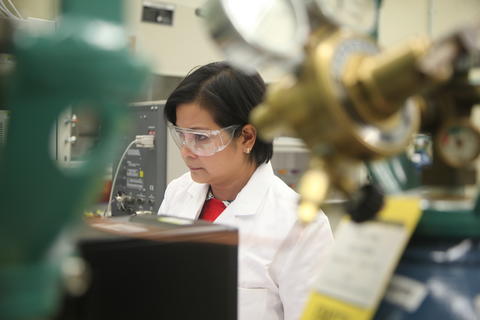DOC FY 2020 Tech Transfer Report Highlights Success in Disease Detection, Space Weather Forecasting and More

GAITHERSBURG, Md. — The U.S. Department of Commerce (DOC) has released the “Annual Report on Technology Transfer: Approach, Plans, Fiscal Year 2020 Activities and Achievements.” The report provides an overview of technology transfer activities from the National Institute of Standards and Technology (NIST), National Oceanic and Atmospheric Administration (NOAA), and the National Telecommunications and Information Administration’s (NTIA) Institute for Telecommunication Sciences (ITS).
One of the primary missions of DOC is to transfer discoveries and technologies from its laboratories to the commercial market through programs that promote job creation, economic growth, sustainable development and improved standards of living across the U.S. DOC works in partnership with academia, industry and other state and federal agencies to achieve these goals.
“This report is integral to understanding and analyzing the tech transfer activities of the agencies, and it provides a great reference point for DOC’s overall role in tech transfer,” said NIST’s Associate Director for Innovation and Industry Services Mojdeh Bahar. “It’s great to see the many milestones, accomplishments and success stories within the federal labs across the department.”
The report highlights tech transfer success stories from the agencies throughout fiscal year 2020. For example, NIST researchers developed a way for laboratories to determine how accurately they can detect mutations in DNA that are linked to various diseases. NIST researchers also have demonstrated miniature laser frequency combs — which are used to measure wavelengths of light — to make precision optical frequency measurements outside the laboratory. Small enough to fit on a chip, miniature versions of these combs are making possible a new generation of atomic clocks, an increase in the number of signals traveling through optical fibers, and the ability to discern tiny frequency shifts in starlight that hint at the presence of unseen planets.
NOAA developed a machine-learning technique to search massive amounts of satellite data to pick out features and patterns significant for space weather to support both short-term forecasting and evaluating long-term solar data. And in partnership with NASA, NOAA conducted the Fire Influence on Regional and Global Environments and Air Quality (FIREX-AQ) intensive field campaign to investigate the impact on air quality and climate from wildfires and agricultural fires across the continental United States. The data from FIREX-AQ is being used to validate and improve NOAA air quality and smoke forecast models. Research papers generated by the FIREX-AQ mission are beginning to appear in scientific journals.
NTIA ITS developed the Spectrum Characterization and Occupancy Sensing (SCOS) standard to support different spectrum sensing technologies and deployments. NTIA ITS also leads and sponsors the Video Quality Experts Group, an open venue where technical experts collaborate to develop subjective test methods for new video technologies. In FY 2020, NTIA ITS supported the group’s efforts to develop and improve statistical methods, value-added experiment designs and no-reference metrics.
The full FY 2020 report can be found on the NIST website.

